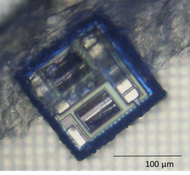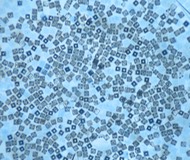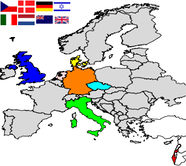The extension and completion of the lablet/dock control and operating software with full diagnostic capabilities for the CMOS1 design generation is a first highlight. The groundwork was laid in year one, but transcending the limited sensor capabilities of the first dock to incorporate significant diagnostics greatly extends the domain of applicability of the dock. In particular, the ability to integrate potentiostat operation with potentials negative or positive with respect to the solution, to add a reference microelectrode, and to measure time dependent voltages and currents allows a selection of analytical tools such as ramp or stepped cyclic voltammetry. An image of the graphical user interface is shown in fig. 1.
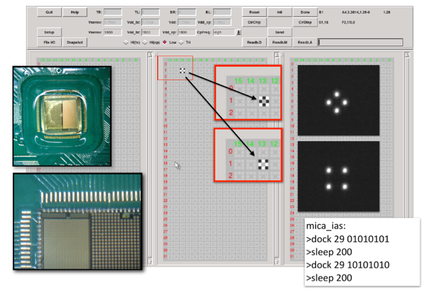
Fig. 1 Snapshot of operating and diagnostic software GUI interface.
A second highlight is the physically grounded simulation of lablet locomotion by electroosmotic drive. Physical calculation reveals that electroosmotic drive can be on for up to 10% of the lablet power cycle (1000s) and that the low voltages of the CMOS circuit are sufficient to provide significant thrust in solution. We used realistic thrust values to compute programmed locomotion trajectories (first in 2D for a buoyant lablet), showing that programmed movement is possible, see fig. 2. Combined with sensors this can be used to create programmable chemotactic lablets as explored in swarm chemistry in WP 10.
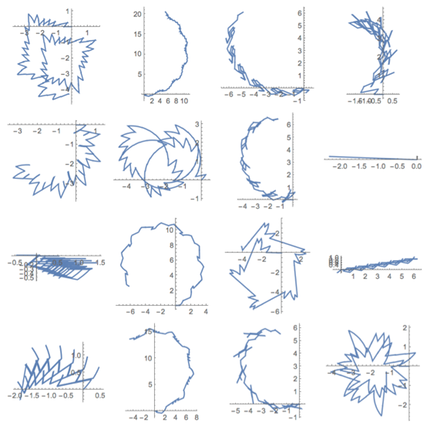
Fig. 2 Elecroosmotic drive trajectories for different periodic sequences of channel electrode activation. 16 random programs with a periodicity of 16 steps are chosen. The electroosmotic drive can induce linear motion along one direction or a combined rotation and translation, depending on the choice of driving electrodes.

